Why you can trust Tom's Hardware
Intel Arc B580 Limited Edition
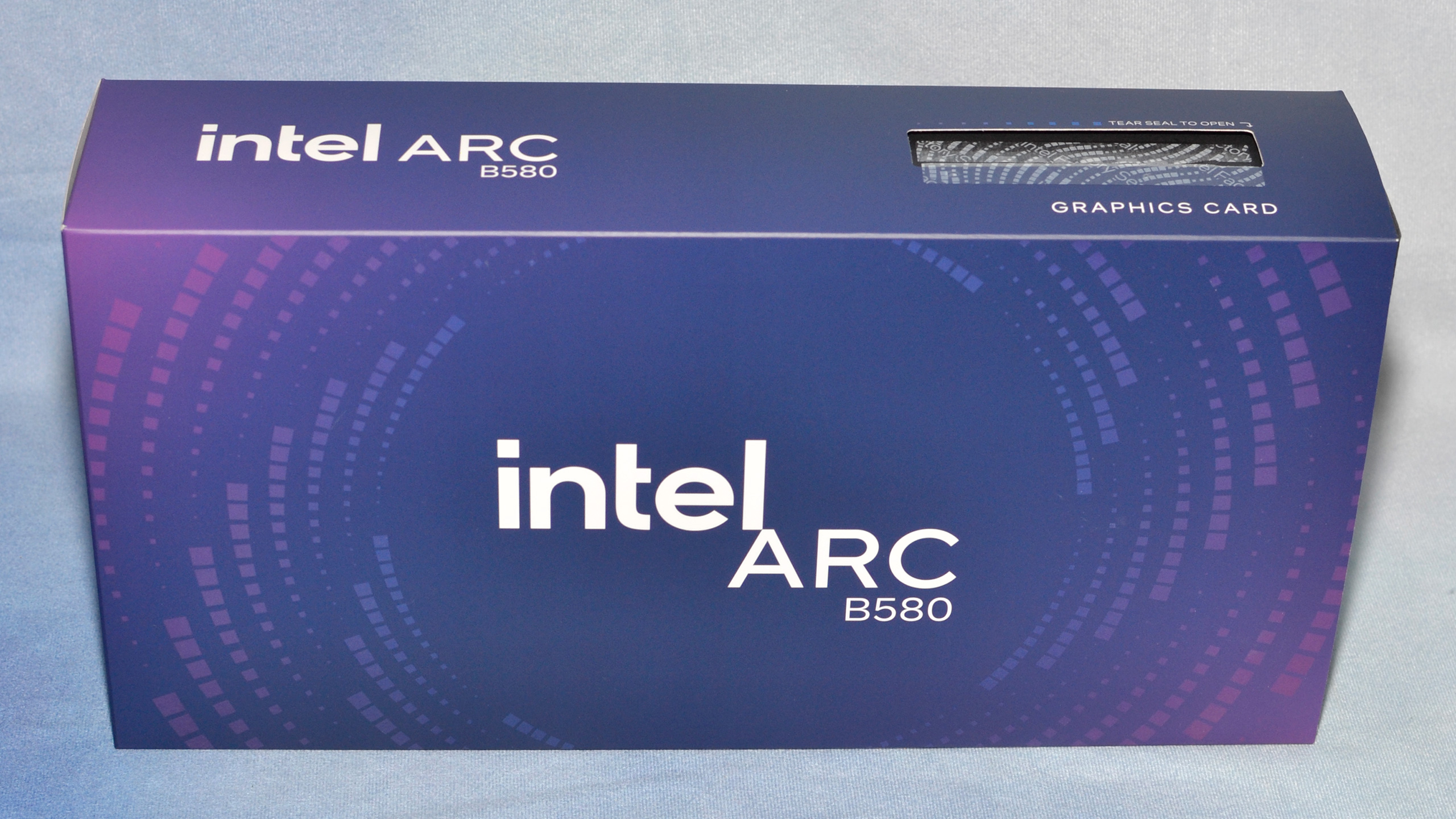
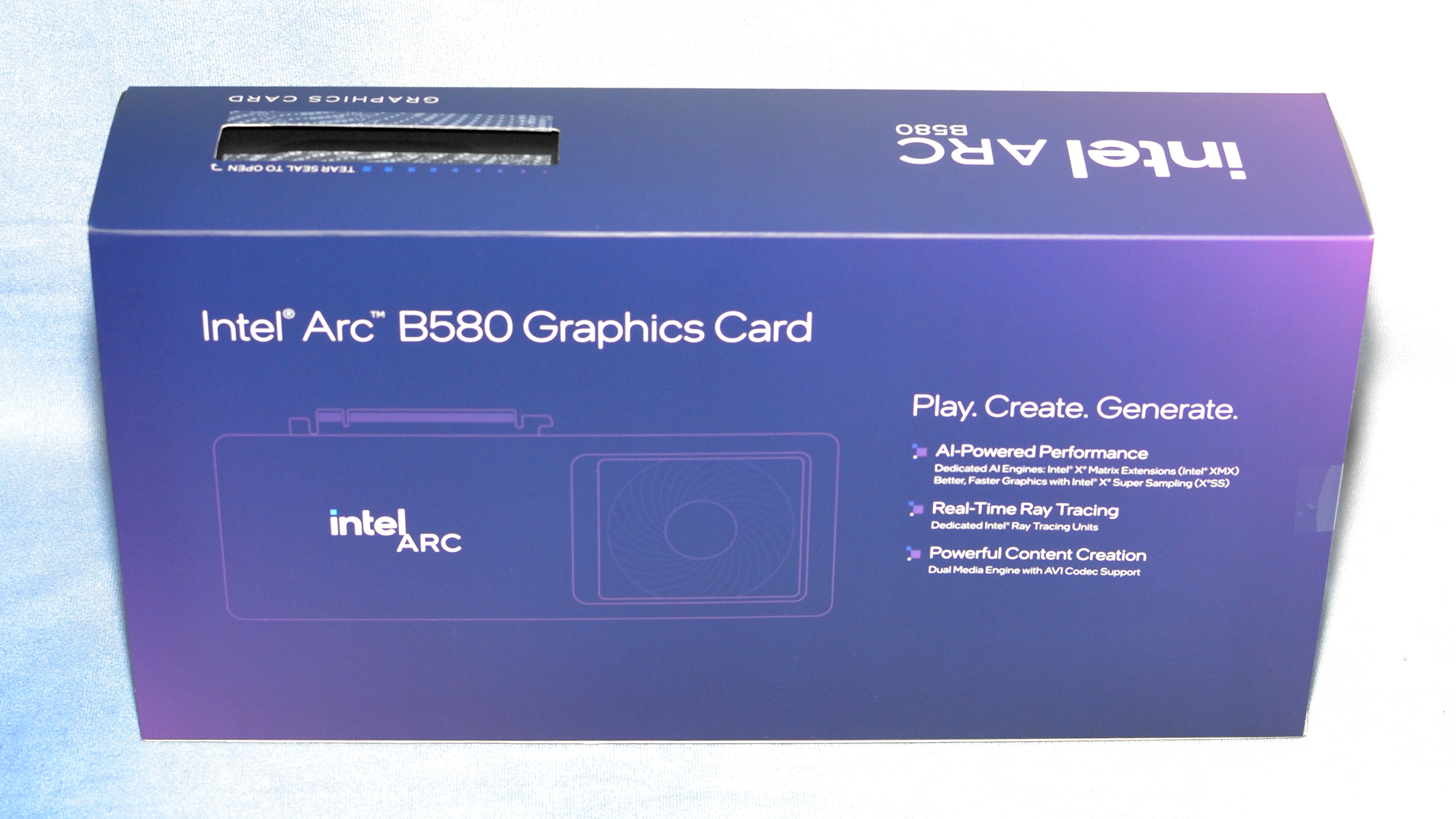
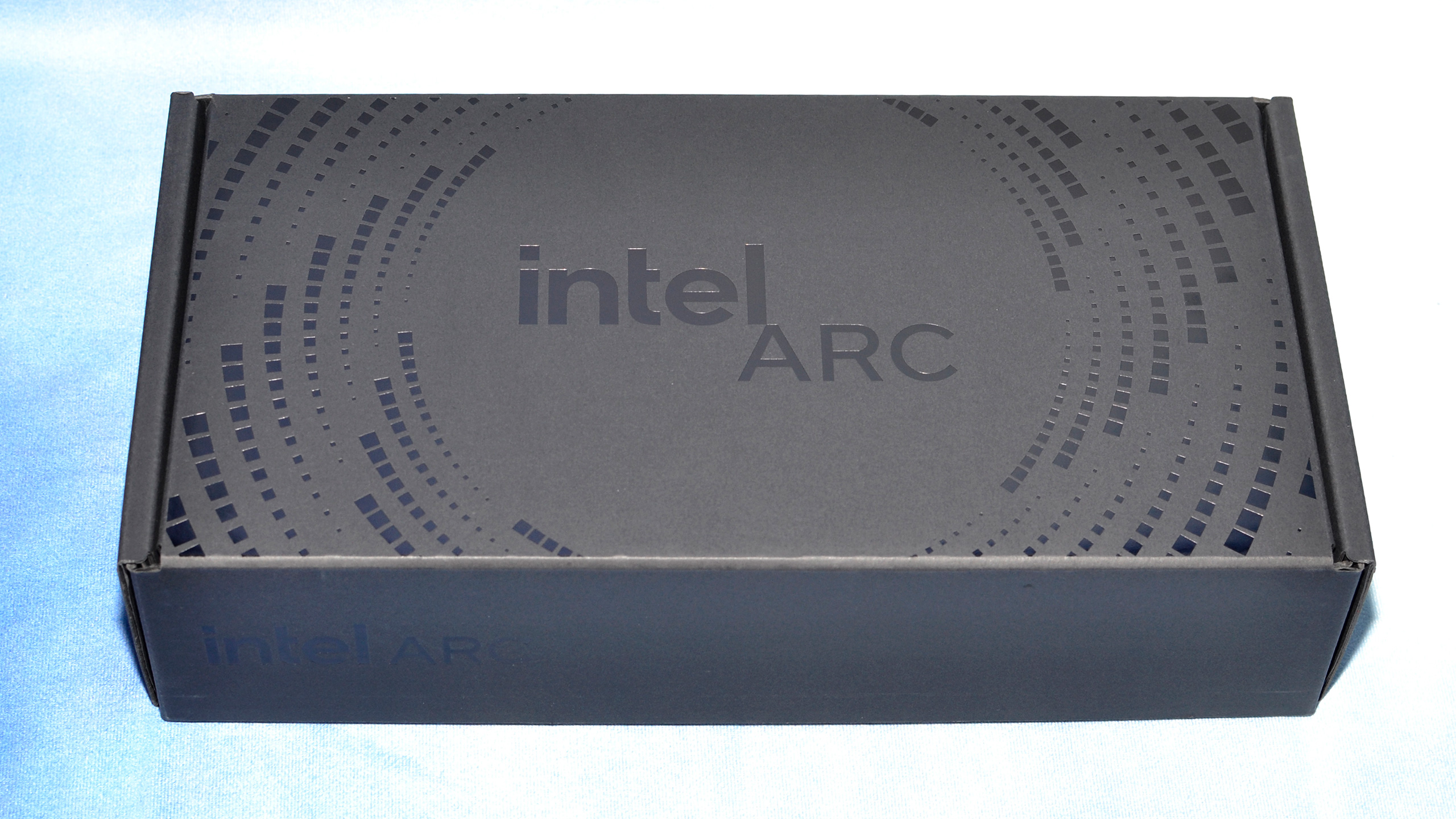
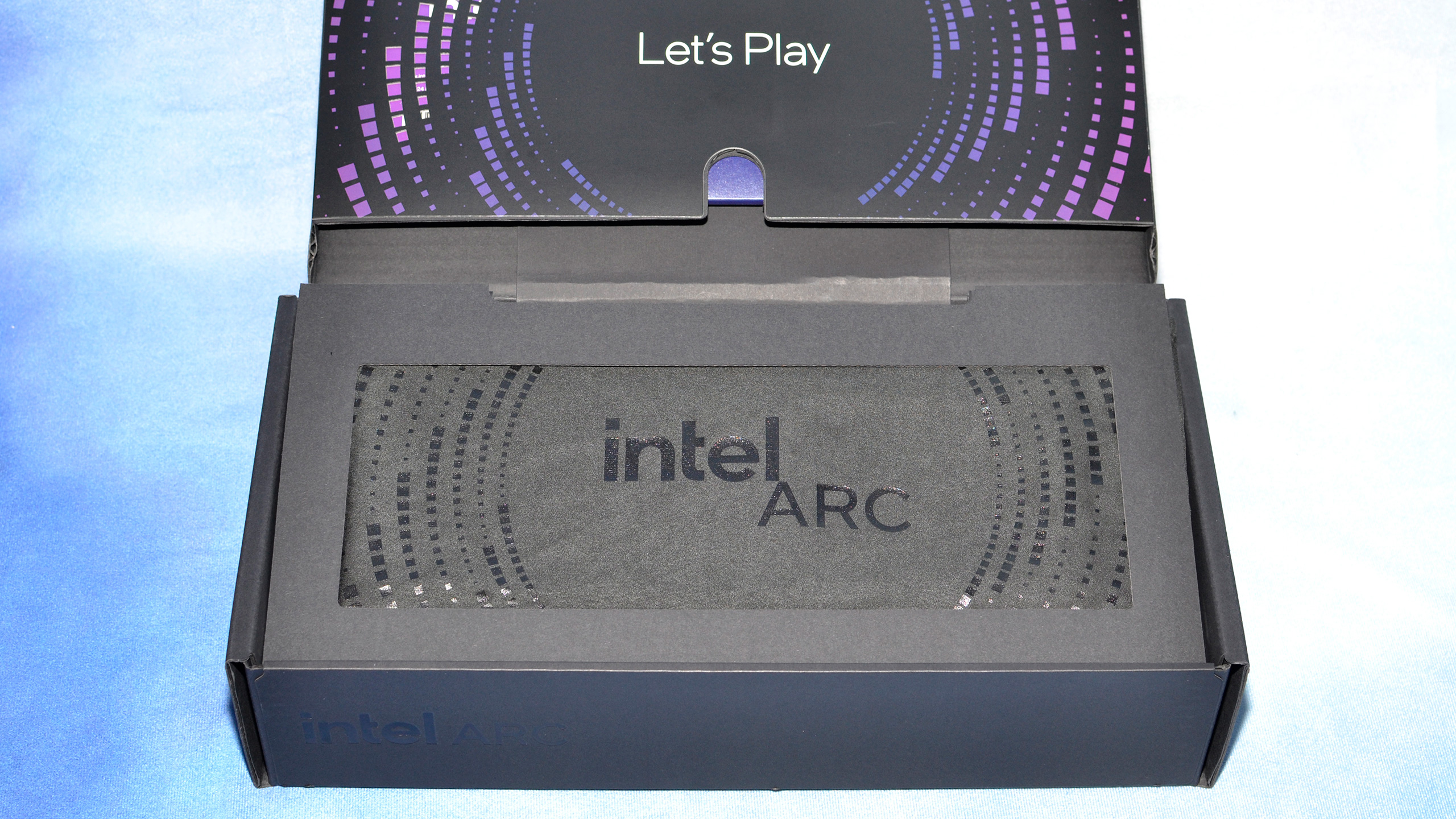
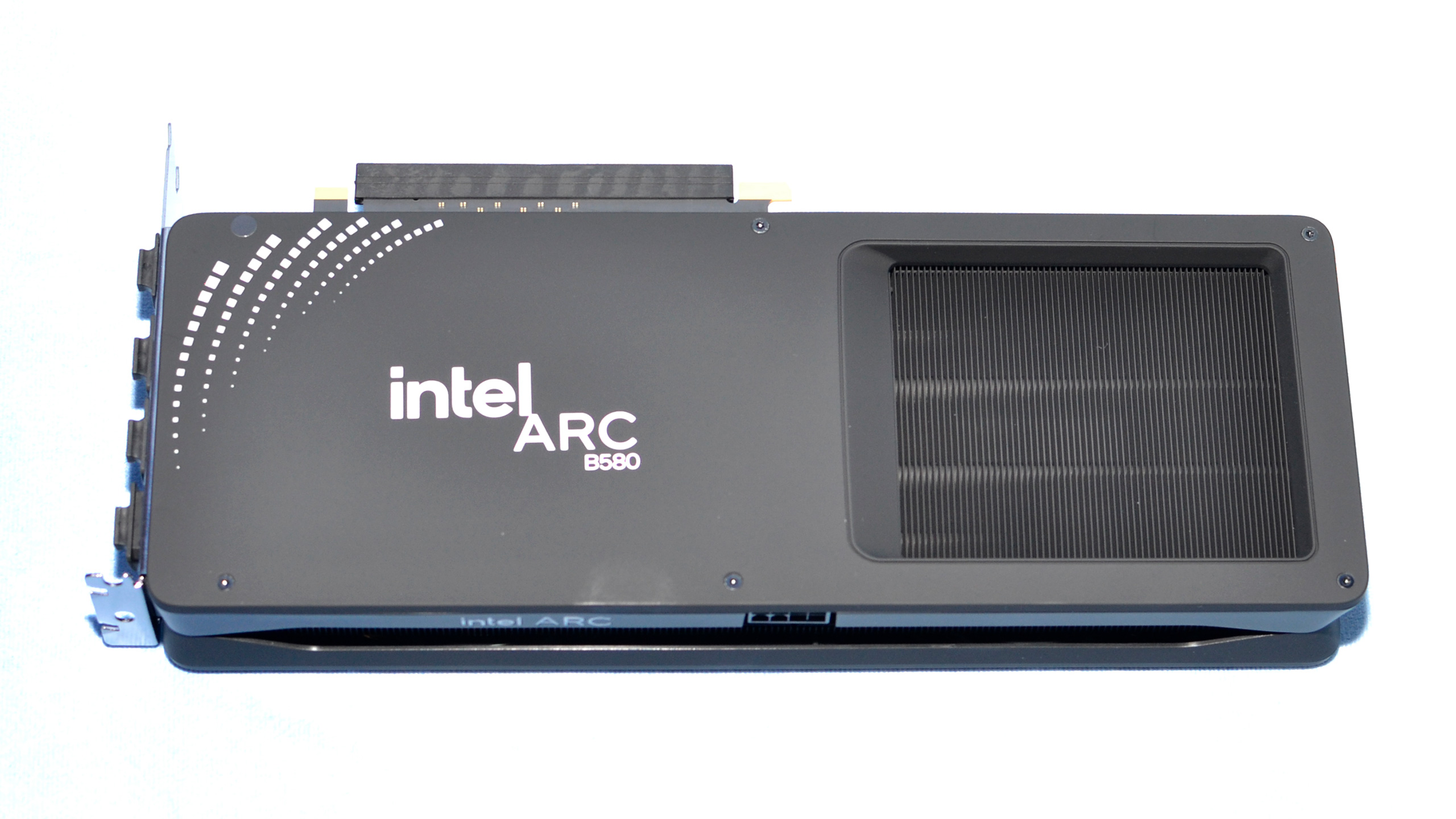
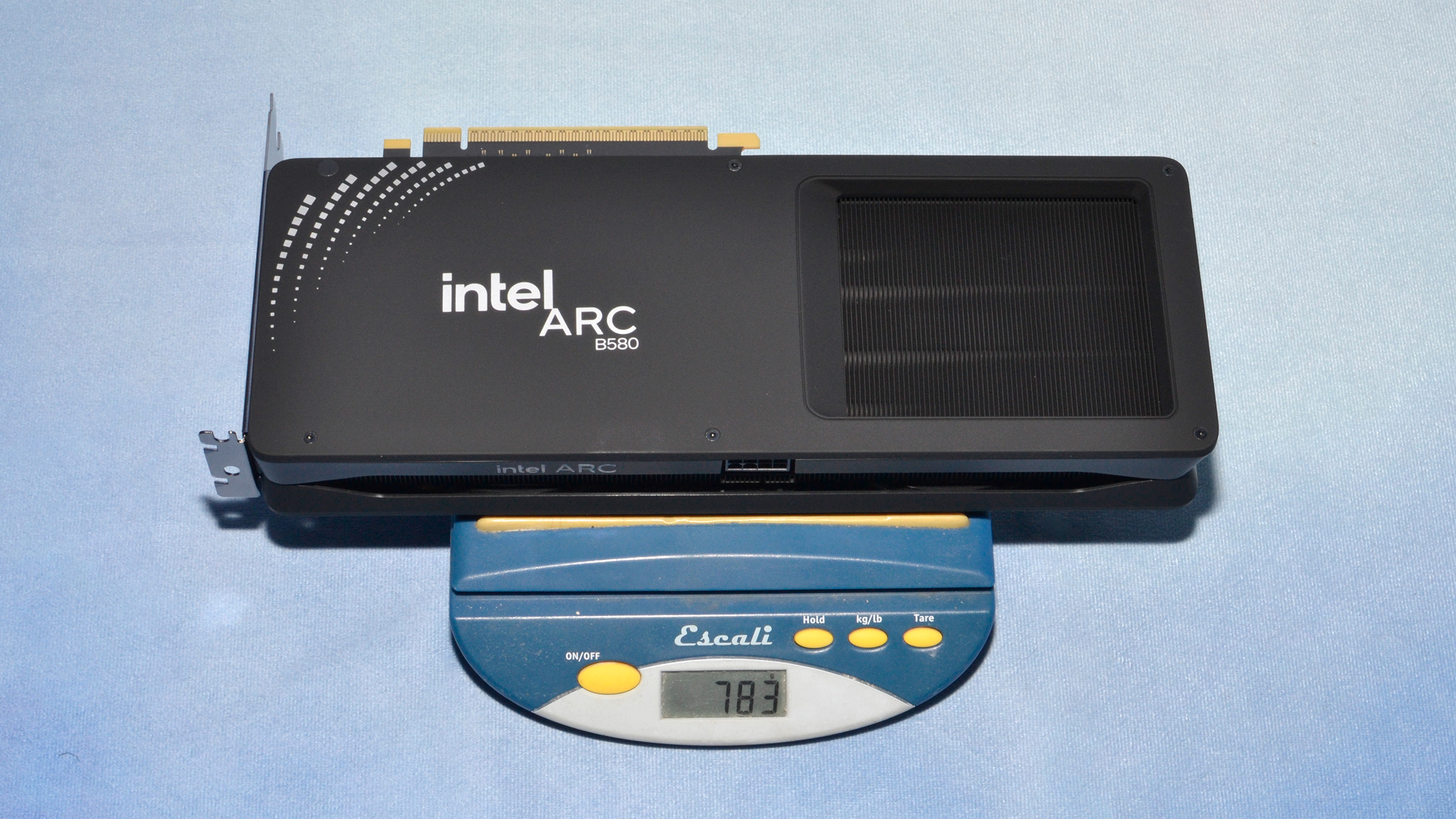
As with Alchemist, Intel will have a reference design Arc A580 Limited Edition graphics card. That "Limited Edition" is for branding, not necessarily because the cards will only be offered in limited quantities. The packaging isn't particularly noteworthy, though there is an included "put together your own cardboard graphics card" punchout kit inside. Not that we really want or need anything else.

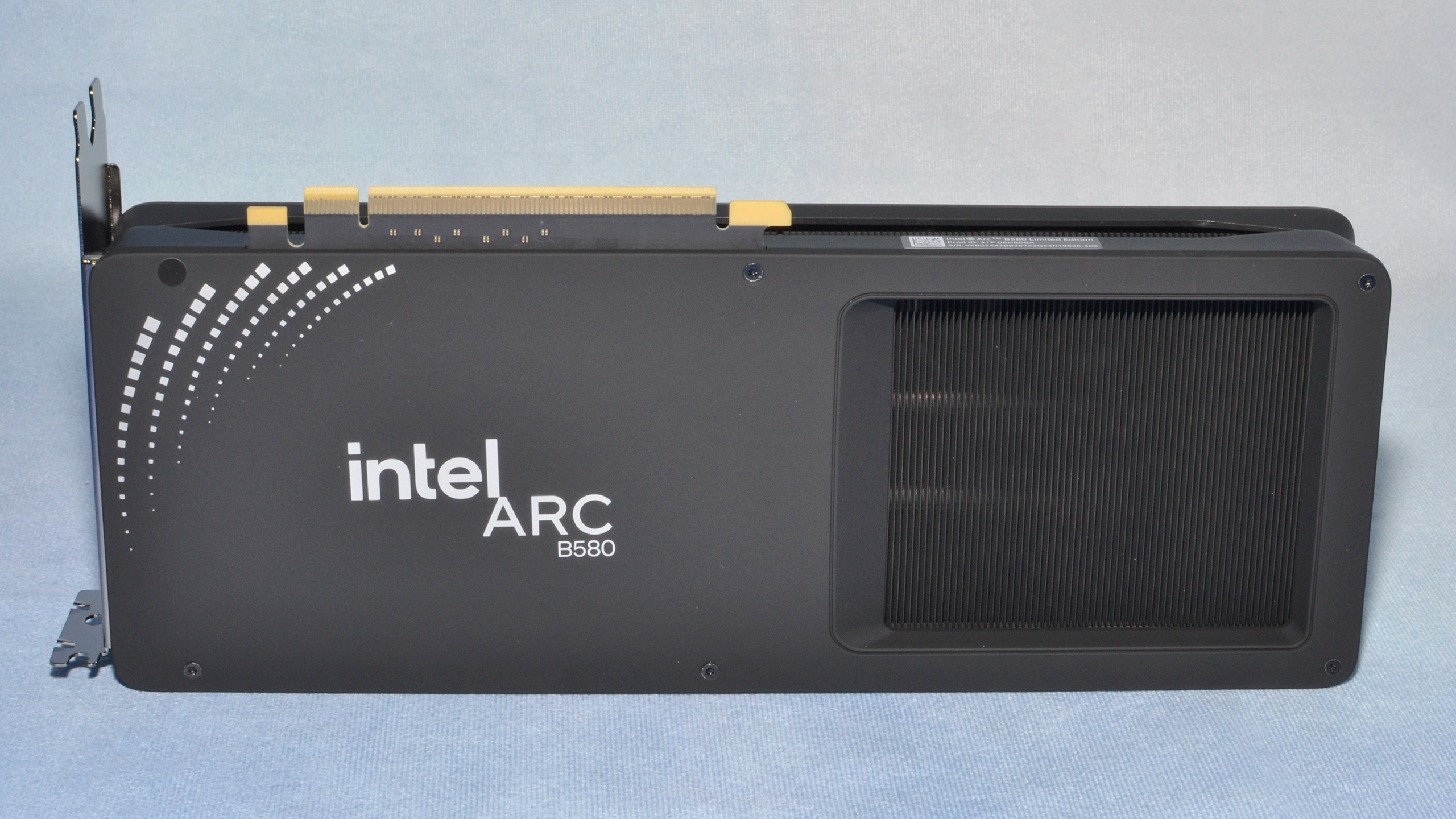
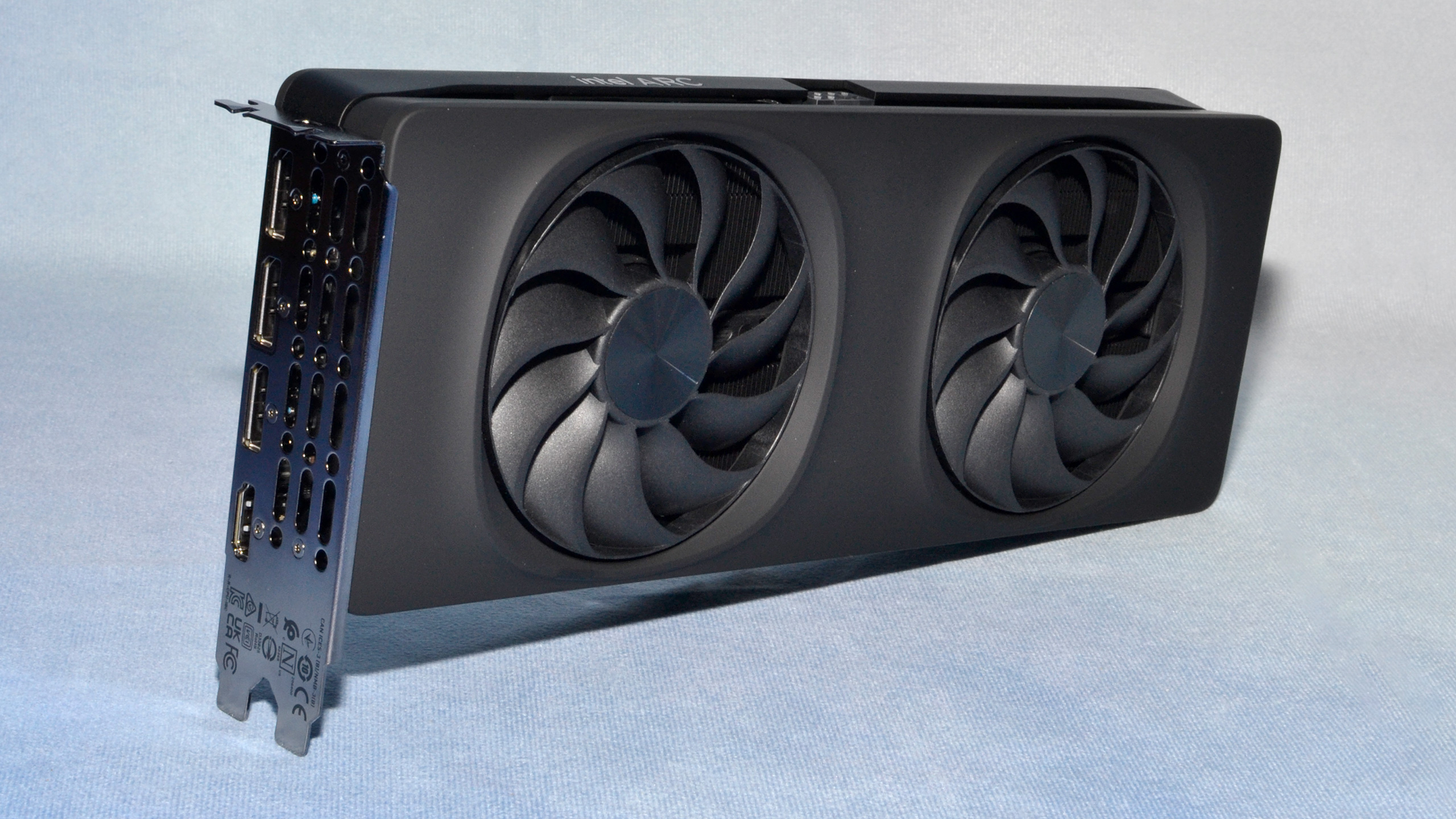
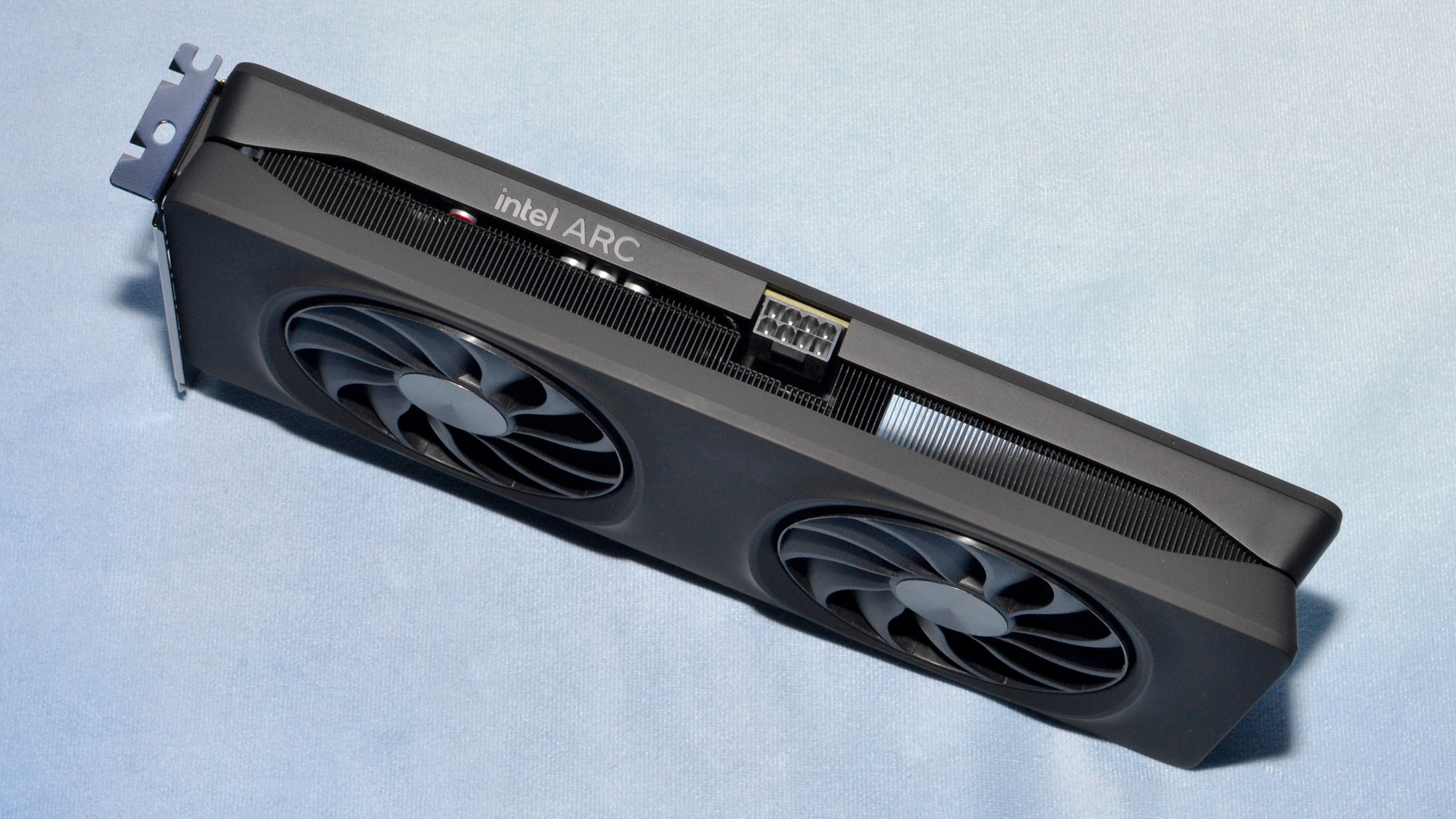
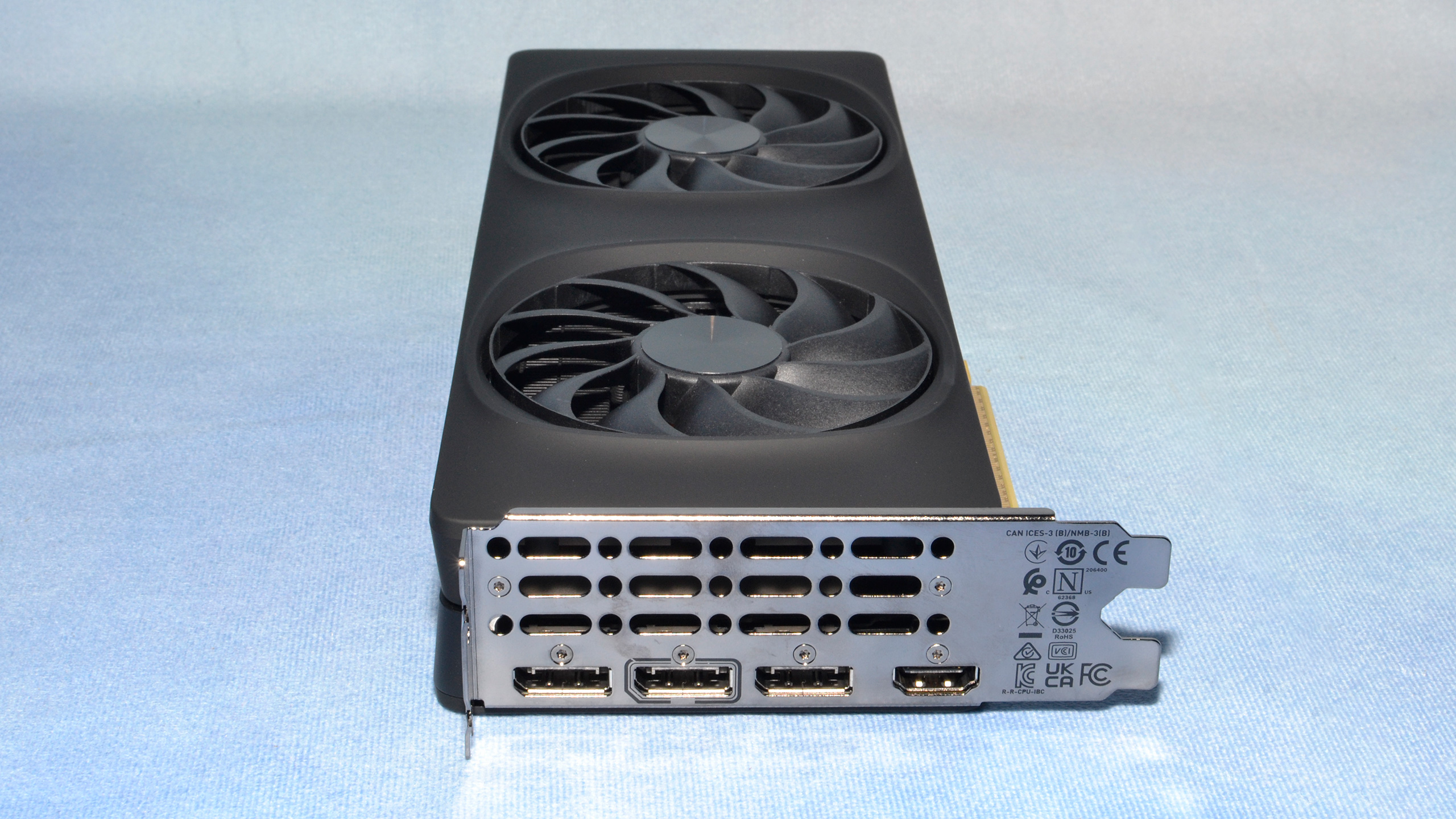
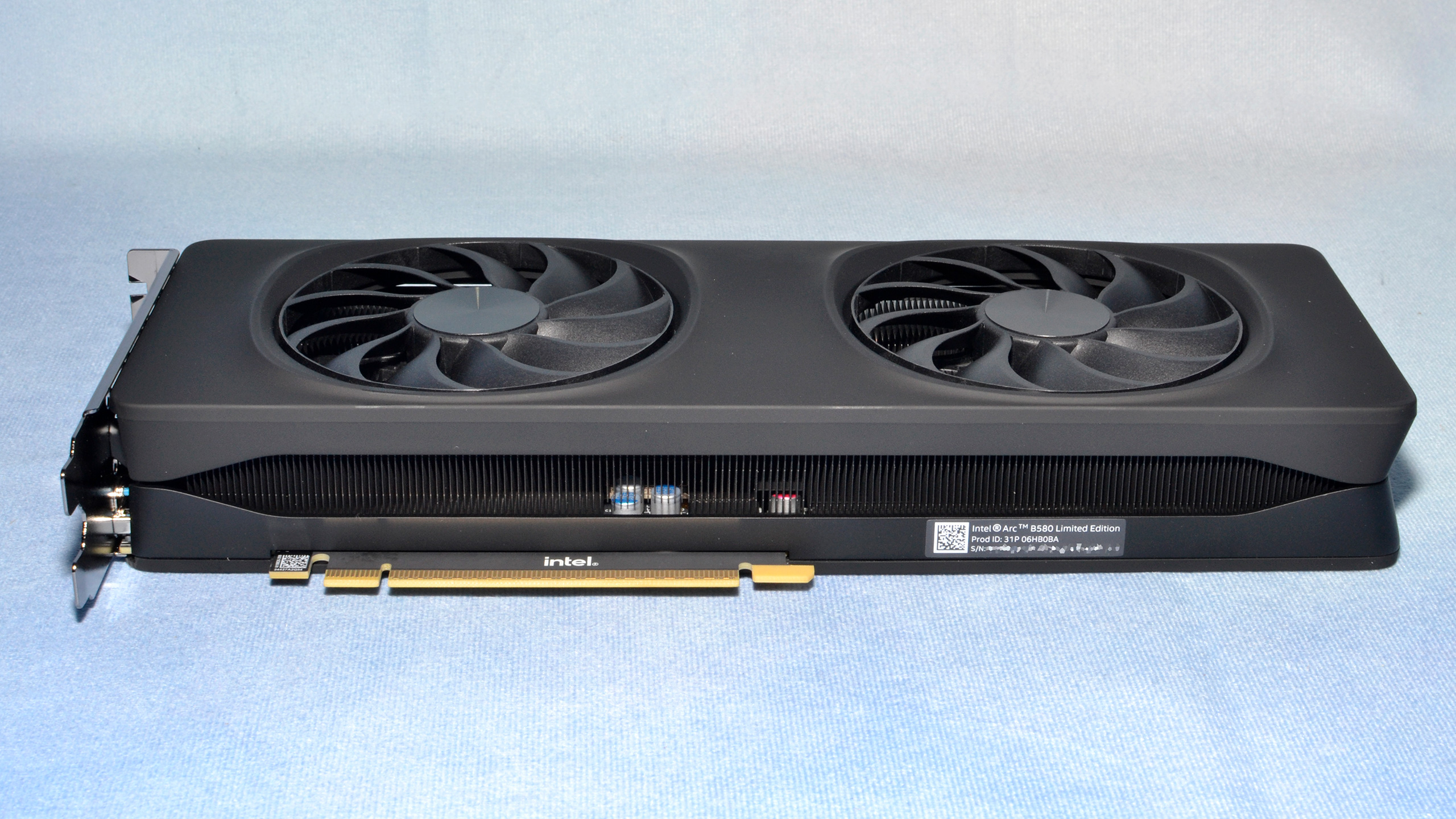
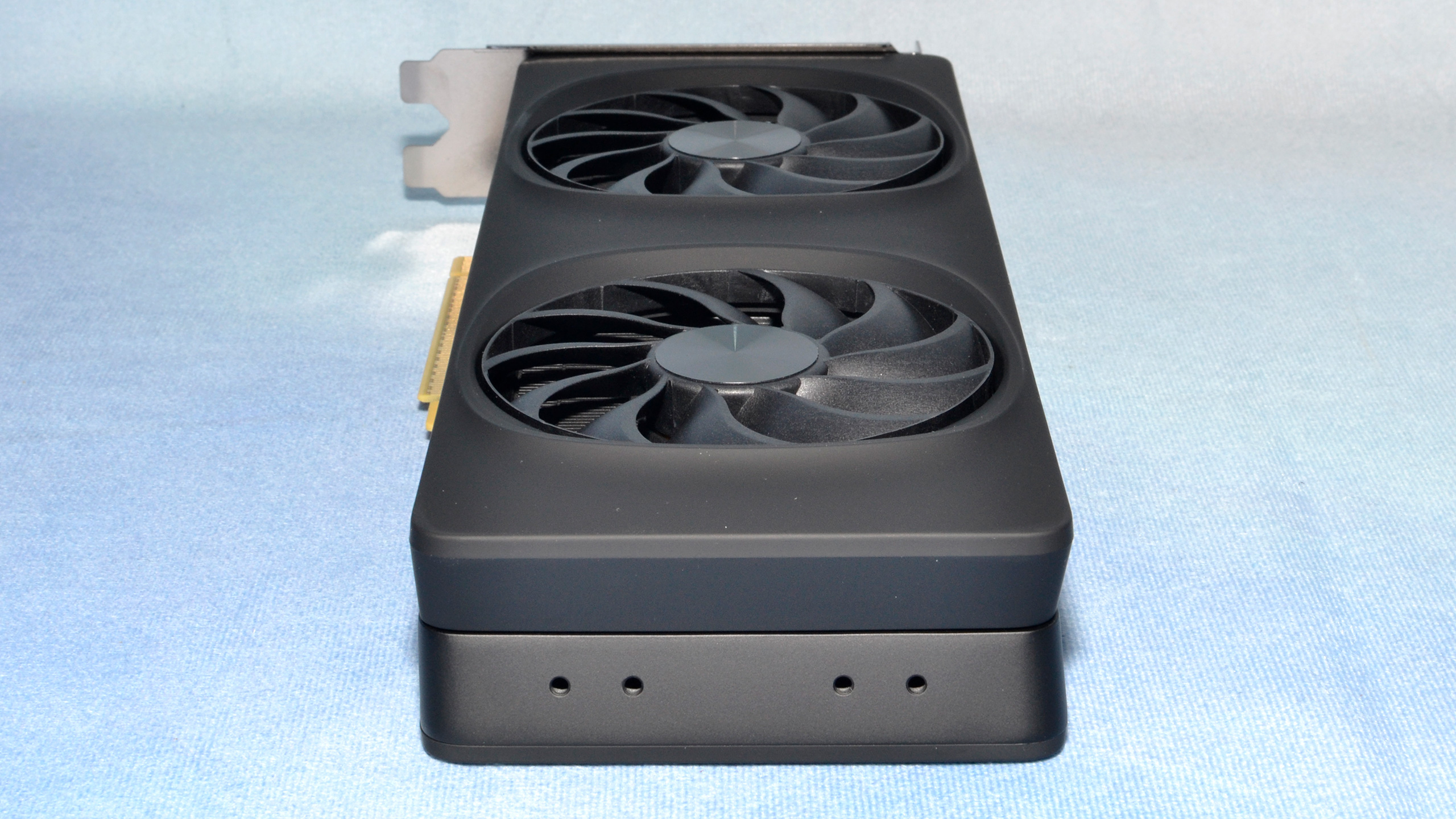

Superficially, from one angle the B580 Limited Edition looks about the same as the A750 with a dual-fan design, but flip it around and there's a big change. The B580 card now has a cutout for the rear fan that allows airflow to go straight through the heatpipes and radiator fins.
Nvidia started doing this sort of design with its RTX 30-series and continued it with the 40-series Founders Edition models. It's proven effective at delivering better cooling with less noise, and plenty of the AIB (add-in board) partner cards in the past couple of years have taken a similar approach.
The other most notable change with the card itself is the removal of the extra 6-pin power connector. Now, the B580 has a single 8-pin connector that, when combined with the 75W from the PCIe slot, can deliver 225W of total power to the board. That leaves a decent amount of headroom for overclocking as well.
The Arc B580 Limited Edition measures 272x111x39 mm and weighs 783g. That's not particularly small, but it does leave plenty of room for cooling and the whole length of the card's interior is filled with radiator fins. For a 190W TBP design, some might say it's overkill, but the result is a quieter running card.
The B580 Limited Edition comes with the standard triple DisplayPort 2.1 outputs, plus a single HDMI 2.1 port. One of the DP2.1 outputs was upgraded this generation to UHBR13.5 (54 Gbps), with 52.22 Gbps of data throughput; this is the 'primary' port (second down on the card) while the other two DP2.1 ports are still UHBR10 (40 Gbps). HDMI 2.1 meanwhile offers 48 Gbps total but only 42 Gbps after the 16b/18b encoding overhead. There still aren't very many DP2.1 monitors available, and DSC (Display Stream Compression) means you can easily drive up to 4K at 240Hz, which should suffice for the next decade or so at least.
Our test setup incidentally uses a Samsung Odyssey Neo G8 32-inch monitor, which supports 4K and 240Hz via DSC. It only supports DP1.4a, but it looks great and works fine on all the latest-generation GPUs, in my experience.
- MORE: Best Graphics Cards
- MORE: GPU Benchmarks and Hierarchy
- MORE: All Graphics Content
Get Tom's Hardware's best news and in-depth reviews, straight to your inbox.
Current page: Intel Arc B580 Limited Edition
Prev Page Intel Arc B580 Review Next Page Intel Arc B580 Test Setup
Jarred Walton is a senior editor at Tom's Hardware focusing on everything GPU. He has been working as a tech journalist since 2004, writing for AnandTech, Maximum PC, and PC Gamer. From the first S3 Virge '3D decelerators' to today's GPUs, Jarred keeps up with all the latest graphics trends and is the one to ask about game performance.
-
Math Geek nicely done :)Reply
looks like a good value. i'm in the market for my next card but seems like waiting a little bit to see what AMD does next is not too bad of an idea. i hate waiting to see what the next best thing is but this close it seems like prudent advice.
side note: it does look like you forgot to replace the place holders on the power consumption paragraph.
"On average, the B580 used xxxW at 1080p medium, xxxW at 1080p ultra, xxxW at 1440p, and xxxW at 4K. As you'd expect, power use typically increases at higher settings and resolutions." -
Jagar123 I am happy to have competition in the market. I imagine next gen AMD and Nvidia cards will be stronger competitors but they might be priced poorly again. Price to performance is key here. We'll see in a month or so.Reply -
shady28 Great review, against relevant parts for this price class too :DReply
Given that Steam shows the 3 most popular GPUs are the 3060 discrete, 4060 laptop, and 4060 discrete, Intel now has a GPU that competes in the largest part of the segment - and leads it in both value and performance.
Granted AMD and Nvidia are about to release new GPUs, but let's also note that the 5060 / 8600 aren't likely to show up until late 2025 or early 2026 if they follow their normal pattern. -
palladin9479 Great review, I'm in the market for a SFF two slot low power card for a living room system. The APU can only do so much and I'm starting to hit walls with it lately so a lower power dGPU might be the only real answer.Reply -
Gururu I guess it will come down to an availability issue. I doubt we will see superior cards by AMD or nVidia in this price bracket by end of Q1 2025. We will certainly see lots of benchmarks blowing these early battlemage offerings in January, but nothing ready for purchase. Later battlemage offerings are in my best guess going to be in the $400 range, likely beating 7800 and 4070, but again probably not until mid-late Q1. If AMD and nVidia drop anything crushing a 4090 you can bet it will be in the $700+ range. Is it fair to say that something beating the B580 readily available in April for $250 is fair competition now? I don't know. Maybe not if a normal consumer can actually get B580 silicon before Christmas.Reply -
Eximo Reply
I would probably still lean towards an RTX 3050 6GB for that. B580 is still a little power hungry for the job.palladin9479 said:Great review, I'm in the market for a SFF two slot low power card for a living room system. The APU can only do so much and I'm starting to hit walls with it lately so a lower power dGPU might be the only real answer.
I use an A380, and that isn't ideal either, since it still needs an 8-pin (at least that model). Though supposedly still only a 75W GPU. -
DS426 Great review, Jarred! The elaboration on your thinking and updating of your test bench's hardware and software is appreciated.Reply
It'll be some time before AMD and NVIDIA (green wants it written this way, by the way: http://http.download.nvidia.com/image_kit/LG_NVCorpBadge.pdf ... was curious as I noticed they have it written that way on their website) have new budget GPU's in this price class, so I myself wouldn't really recommend that a prospective owner waits. Of course, a lot of it also depends on if building new or upgrading (and upgrading from what). There's a huge user base at this price point, so I do imagine that Intel will get some market penetration for end users, not just prebuilds. This, particularly since day 1 drivers are already fairly stable overall and Intel now has the value leader at this price point; Intel didn't mess up this launch, whereas botched launches can tarnish audience sentiment of the product for months and years, if not permanently. -
King_V Definitely liking what I see here. And, glad to know that Intel is taking this very seriously. They're clearly not messing around.Reply -
rluker5 Transistor density pretty close to AMD.Reply
Transistor density of 7600XT is 65.2 M/mm2 and B580 is 72.1 M/mm2 per Techpowerup. Sure B580 is on 5nm while 7600XT is on 6nm but that isn't that big a difference. Definitely moving in the right direction. And more importantly performance per mm2 is much closer to AMD. And performance per watt.
Catching up really fast. -
caseym54 Probably flogging a dead horse here, but a 6-column table with 5 columns visible and a slider is truly lame.Reply